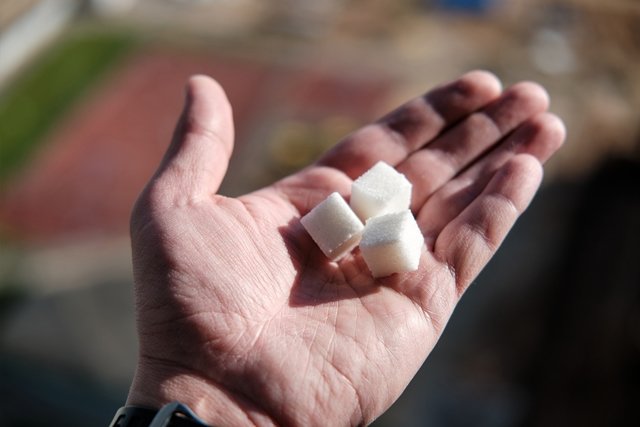When the sugar level is between 55 and 69 mg/dL, which characterizes hypoglycemia, it is recommended to eat 15 grams of simple sugar, such as sugar, honey or fruit juice, for example, and monitor blood glucose levels for the next 15 minutes. If after this time your blood sugar is still low, it is recommended to eat 15 grams of simple sugar again and, after the sugar level stabilizes, have a full meal.
Simple sugars are quickly absorbed in the intestine, causing glucose levels to increase and, over time, alleviating symptoms of hypoglycemia, such as excessive sweating, dizziness and anxiety, for example. Know how to recognize the symptoms of hypoglycemia.
When the sugar level is below 55 mg/dL, symptoms may be more intense. In these cases, a glucagon injection should be given, which can be purchased at the pharmacy with a prescription, and then go to the nearest emergency department.

What to do to raise your sugar
Some options for what can be consumed to increase blood sugar are:
- 1 tablespoon (15 grams) of sugar under the tongue;
- 1 tablespoon of honey;
- Drink 1/2 glass of fruit juice;
- Suck 3 bullets;
- Eat 1 sweet bread.
After 15 minutes, blood glucose should be assessed again and, if it is still low, the process should be repeated. If your sugar level still does not improve, you should go to the hospital quickly or call an ambulance by calling 911.
In the case of children, the amount of sugar should be lower, and it is important that the pediatrician is consulted so that guidance can be given on the amount of sugar according to the child’s age.
What to do in case of severe hypoglycemia
When hypoglycemia is very severe, the person is not fully conscious and may faint and, in some cases, have cardiorespiratory arrest.
In these cases, it is important that family and close friends know what to do. If you have a glucagon kit at home, it must be applied immediately, and it is also important to talk to your doctor to obtain the necessary guidance on application. After applying glucagon, you should wait about 20 minutes and assess blood glucose levels. If it remains low, it is important to go to the nearest emergency room.
If the person loses consciousness and stops breathing, it is recommended to start cardiac massage until the medical team arrives, to keep the blood circulating. See step-by-step instructions on how to perform cardiac massage.
How to know if it is hypoglycemia
Hypoglycemia happens when the sugar level is below 70 mg/dL, which usually happens after taking the wrong dose of insulin, not eating for a long time or having done very intense physical activity, for example.
The main symptoms that help you know that your sugar is low are:
- Uncontrollable tremor;
- Sudden anxiety for no apparent reason;
- Cold sweats;
- Confusion;
- Feeling of dizziness;
- Difficulty seeing;
- Difficulty concentrating.
In a more serious situation, the person may even faint or have an epileptic seizure. At this point, if the person has not stopped breathing, they should be placed in a safe lateral position and call for medical help.
Bibliography
- CDC. How To Treat Low Blood Sugar (Hypoglycemia). Available at: <https://www.cdc.gov/diabetes/basics/low-blood-sugar-treatment.html>. Accessed on March 7, 2023
- NIDDK-NIH. Low Blood Glucose (Hypoglycemia). Disponível em: <https://www.niddk.nih.gov/health-information/diabetes/overview/preventing-problems/low-blood-glucose-hypoglycemia>. Acesso em 30 jul 2019
- MAYO CLINIC. Hypoglycemia. Disponível em: <https://www.mayoclinic.org/diseases-conditions/hypoglycemia/symptoms-causes/syc-20373685>. Acesso em 30 jul 2019

Sign up for our newsletter and stay up to date with exclusive news
that can transform your routine!
Warning: Undefined array key "title" in /home/storelat/public_html/wp-content/plugins/link-whisper-premium/templates/frontend/related-posts.php on line 12
Warning: Undefined array key "title_tag" in /home/storelat/public_html/wp-content/plugins/link-whisper-premium/templates/frontend/related-posts.php on line 13




